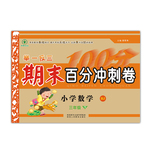题目内容
Science has a lot of uses. It can uncover laws of nature, cure diseases, make bombs, and help bridges to stand up. Indeed science is so good at what it does that there’s always a temptation(诱惑) to drag it into problems where it may not be helpful. David Brooks, author of The Social Animal: The Hidden Sources of Love, Character, and Achievement, appears to be the latest in a long line of writers who have failed to go against the temptation.
Brooks gained fame for several books. His latest book The Social Animal, however, is more ambitious and serious than his earlier books. It is an attempt to deal with a set of weighty topics. The book focuses on big questions: What has science uncovered about human nature? What are the sources of character? And why are some people happy and successful while others aren’t?
To answer these questions, Brooks studies a wide range of disciplines(学科). Considering this, you might expect the book to be a simple description of facts. But Brooks has formed his book in an unusual, and perhaps unfortunate way. Instead of introducing scientific theories, he tells a story, within which he tries to make his points, perhaps in order to keep the reader’s attention. So as Harold and Erica, the hero and heroine in his story, live through childhood, we hear about the science of child development and as they begin to date we hear about the theory of sexual attraction. Brooks carries this through to the death of one of his characters.
On the whole, Brooks’ story is acceptable if uninspired. As one would expect, his writing is mostly clear and, to be fair, some chapters stand out above the rest. I enjoyed, for instance, the chapter in which Harold discovers how to think on his own. While Harold and Erica are certainly not strong or memorable characters, the more serious problems with The Social Animal lie elsewhere. These problems partly involve Brooks’ attempt to translate his tale into science.
1.The author mentions the functions of science at the beginning of the passage to__________.
A. explain where science can be applied
B. show the value of Brooks’ new book
C. remind the reader of the importance of science
D. explain why many writers use science in their works
2.According to the author, which of the following could be a strength of the book?
A. Its strong basis. B. Its clear writing.
C. Its convincing points. D. Its memorable characters.
3.What is the author’s general attitude towards the book?
A. Contradictory. B. Supportive. C. Cautious. D. Critical.
4.What is the author likely to write about after the last paragraph?
A. Death of the characters. B. Brooks’ life experience.
C. Problems with the book. D. Brooks’ translation skills.
 举一反三期末百分冲刺卷系列答案
举一反三期末百分冲刺卷系列答案Science for Kids This month's most popular books | |
1.Women in Science by Rachel Ignotofsky. Price $25 We all know the story of Marie Curie and her many scientific achievements. But many other brilliant female scientists are far less well known. This book is a great introduction to the lives and works of some of the most important and up-to-now unknown women in science. Recommended for Ages: 12-15 Order Now | Special Offer For this month only, all BestbooksBook Club members will pay 20% less for every book ordered. Join our club for free and save big money! Delivery We bring every book you order right to your door within three days. For BestbooksBook Club members this is free. Non-members must pay an extra $2 per book. |
2. First Big book of How by Jill Esbaum. Price $15 An excellent book about sea life for young children. The book is divided into 4 parts, one for each of the Pacific, Atlantic, Indian and Arctic oceans. It focuses on the different animals found in each of these seas, along with interesting facts and amazing pictures. Ages: 5-10 Order Now | |
3. A Really Short History of Nearly Everything by Bill Bryson. Price $15 Bill Bryson takes readers on a very funny and educational trip through the history of modern science--from its unexpected successes to its great failures and everything in between. Ages: 14 and over Order Now | |
4. National Geographic's First Big Book of the World by Jan Carn. Price $20 This book is the perfect introduction to the seven continents(洲). It tells young readers about the different animals that live on each of these lands and gives a simple description of the people's history and culture. Ages: 5-12 Order Now |
1.How are the books on this webpage listed?
A. By price. B. By popularity. C. By reader’s age. D. By writer’ s name.
2.What is true about the book Women in Science?
A. It is mainly about Marie Curie's history.
B. It lists all the important scientific achievements.
C. It includes women scientists that aren’t famous.
D. It is mostly about the development of modem science.
3.How much will a Bestbooks Book Club member pay in total if he orders First Big Book of How and A Really Short History of Nearly Everything today?
A. $34. B. $30. C. $26. D. $24.
4.A primary school student who needs to write a science report about African elephants should choose__________.
A. Women in science B. First Big Book of How
C. A Really Short History of Nearly Everything D. National Geographic's First Big Book of the World
5.What is the main purpose of this webpage?
A. To sell books to young readers. B. To attract new book club members.
C. To encourage students' interest in science. D. To review books young readers might like

